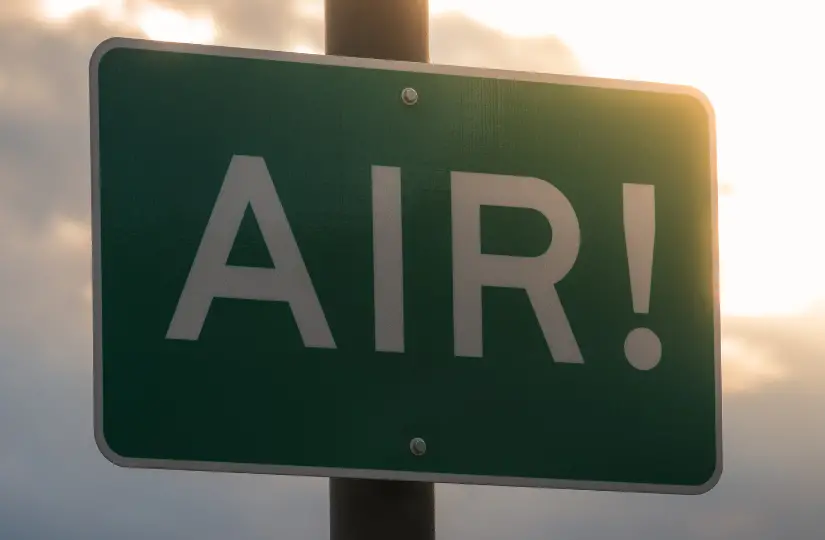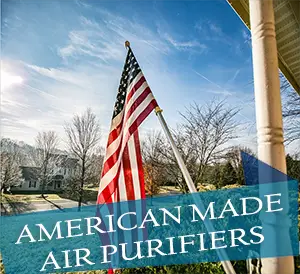
You might have heard of air-cleaning devices such as air purifiers, but what is an air scrubber? How does it work and is it any different from an air purifier? We’ll give you the answers in this comprehensive guide – especially because the two are often confused with each other.
Air scrubbers, like air purifiers, clean the air, but they are usually much bigger devices that can be ducted to your HVAC or furnace (provided you have the right inlet and outlet size). Therefore, they are meant to work in a larger-scale area, such as a job site or if your home is under construction or renovation.
We know how awful it is to inhale dust from a construction site or a home remodeling project. If you’ve been having this problem, air scrubbers are a great addition to your work area so you can breathe easy and still get the job done – whether it’s building a new room, destroying walls, or repairing areas.
What does an air scrubber do?
An air scrubber is a device that cleans the air of harmful pollutants, such as dust, mold, smoke, concrete debris, and the like. While it may sound like it’s similar to air purifiers, there are differences (we’ll discuss them later).
Water damage, which is usually caused by mold, can ruin a business and/or your home. For that, an air scrubber can help because it gets rid of mold spores, provided it has the right set of filters (HEPA, activated carbon, and MERV-10). These filters get rid of mold spores to prevent further water damage.
When it comes to operation, air scrubbers are typically used on construction sites because of their design that’s meant for large-scale use. Typically ducted to an HVAC or furnace, an air scrubber can also be daisy-chained (stacked together) to combine their power depending on the size of the area to be cleaned.
Do air scrubbers actually work?
You’re probably reading this article and wondering: how effective are scrubbers? Provided you have the right filter, such as HEPA, as well as activated carbon, an air scrubber is highly efficient. HEPA filters are capable of cleaning up to 99.97% of pollutants up to the size of 0.3 microns.
With that in mind, here are some tips on making sure that your air scrubber becomes effective in cleaning the air in your home renovation area or jobsite:
- Make sure it’s suited for the room size (with at least 550 CFM per 800 square feet or higher)
- Replace the filters when needed (some units have a filter light indicator)
- Try daisy-chaining multiple scrubbers for cramped spaces or larger areas
- Operate the air scrubber for at least 24 to 48 hours to constantly remove air pollutants
- Clean the pre-filter (MERV-10) when necessary to avoid dirt getting stuck
What is the difference between an air scrubber and an air purifier?
So, when telling apart these two air cleaning devices, what is an air scrubber and what’s an air purifier? Here are some differences between the two:
Operation and Use
Air purifiers are typically used for the home while air scrubbers are commonly seen on the job site or business space. With that said, if you have a home renovation project, such as painting, mold remediation, and other repairs, air scrubbers can also help lessen the dust and pollutants from the air.
Design
Looking at the design alone, it’s easy to tell which is an air purifier and an air scrubber. Air purifiers are usually stylish and aesthetic in terms of design while air scrubbers look bulky and heavy-duty – suitable for industrial spaces. Air scrubbers are typically made of rotomolded polyethylene housing for durability.
Power
As air scrubbers can be daisy-chained from 3 to 5 units together, they are mostly meant for industrial use and large-scale air cleaning. However, you can also use two small air purifiers in a room, but they cannot be daisy-chained the same way as an air scrubber can.
Noise level
Air purifiers are notable for being quieter than air scrubbers in terms of fan noise level. That’s because an air purifier is usually meant for a bedroom or office setting while air scrubbers are usually set in a job site where noise wouldn’t be a problem.
When should you use an air scrubber?
So, what are the instances when an air scrubber is helpful? Here are some of them:
For home renovation projects
Dust, paint smells, concrete, mold, and other construction debris can badly pollute the air where the renovation project takes place. Therefore, you’ll need the best air scrubber for home use if you’re looking to renovate your home.
For industrial applications
Whether it’s a building job site, a welding shop, a warehouse, or some other industrial application (even outdoors), air scrubbers can help clean the air of the surrounding area. Because they can be daisy-chained, it’s easy to get more cleaning power by combining a few units together.
For operating businesses
A salon is one example of a business where air pollution can badly affect the customers and the workers. Having an air scrubber can help reduce the smell of hair and nail care products just as it can work against mold and other harmful chemicals – provided it has the right filter (activated carbon).
FAQs
How does an air scrubber help with water damage?
Air scrubbers can target mold spores that are already in the air and remove it. While it cannot reverse water damage, it can help reduce the effects of mold in an area that is not affected by water damage yet. If you’re wondering “what are the best air scrubbers for mold?” then we have some suggestions for you.
When should I replace the filter of an air scrubber?
HEPA filters require at least 6 to 12 months depending on the manufacturer’s specification or how often you use them. For activated carbon filters, note if there’s an acidic smell – that’s an indicator that you need to replace it.
Do air scrubbers emit ozone?
Most air scrubbers don’t – but always check with the manufacturer to find out. If it is CARB-compliant and comes with a HEPA filter, it is likely ozone-free. Ground-level ozone is bad for our health because it can cause coughing and lung problems.
Conclusion
So, let’s summarize: what is an air scrubber? It is an air cleaning specializing in mold problems so they are more suitable for water damage treatment plans. However, it can also be used for some outdoor areas, welding facilities, and similar industrial applications.
Compared to an air purifier, air scrubbers are usually meant to operate on large-scale applications, such as job sites, home renovations, and businesses. Either way, both of them can be used to help clean the air of harmful pollutants so you can breathe easily and live healthily.


